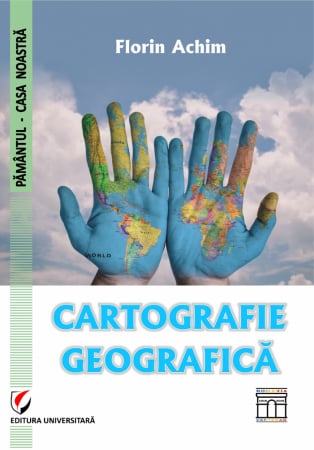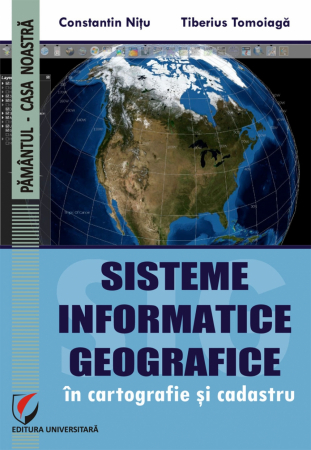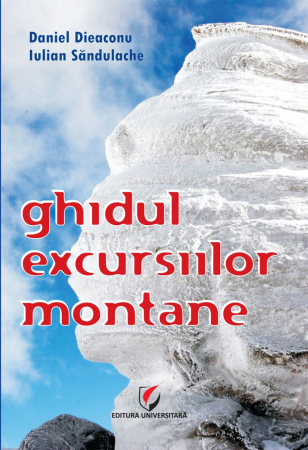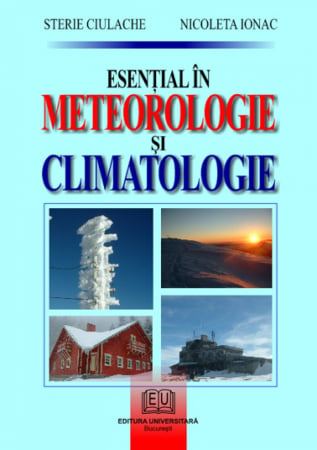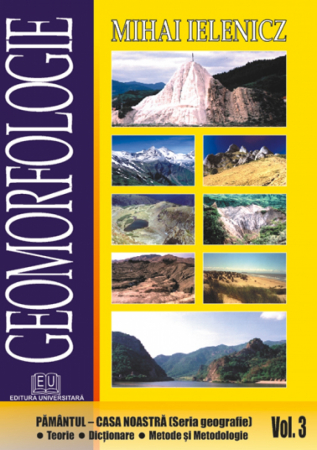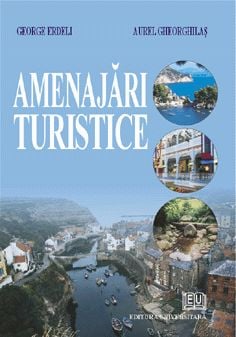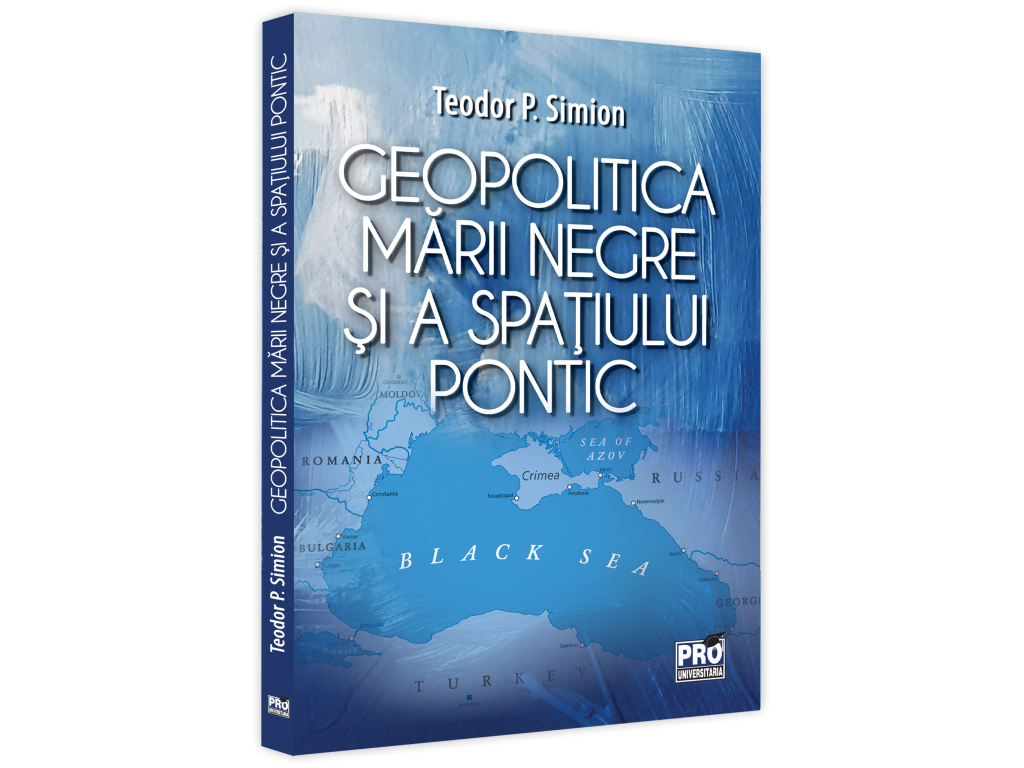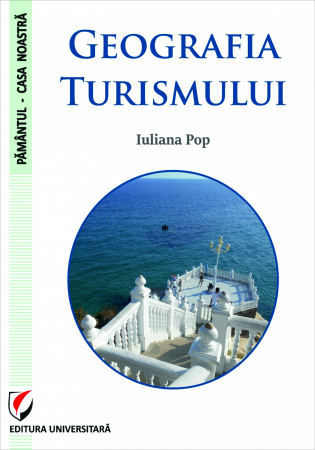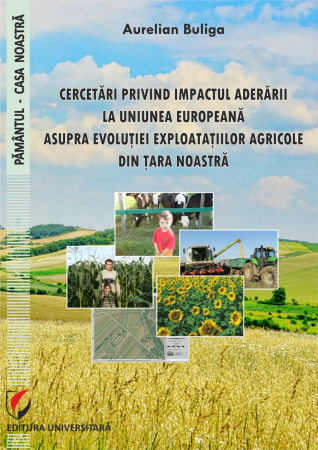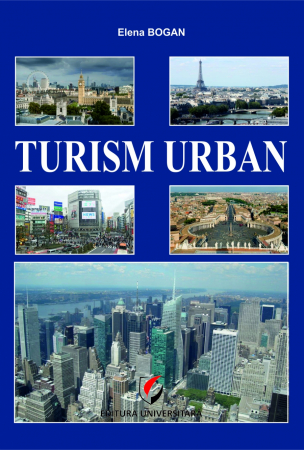Publisher: Editura Universitara
Author: Gabriela Adina Morosanu
ISBN: 978-606-28-1203-4
DOI: https://doi.org/10.5682/9786062812034
Publisher year: 2021
Edition: I
Pages: 408
- Description
- Download (1)
- Authors
- Content
- More details
- Where to find it
- Reviews (0)
Ce travail se propose de répondre aux questions suivantes :
(i) Quels sont les facteurs naturels et anthropiques contribuant à la production et au transfert des flux de matière liquide et solide au niveau du bassin de la rivière Jiu et quel est leur rôle dans la dynamique hydrosédimentaire ?
(ii) Quelle est l’importance des échelles spatiales et temporelles dans l’analyse de la dynamique hydrosédimentaire en ce qui concerne les sources de sédiments, les évènements hydrologiques extrêmes, les voies de transfert et les zones favorables à l’accumulation ?
Un traceur hydrosédimentaire original a été utilisé par cette recherche. Le bassin versant draine en particulier deux gisements de charbon, de la houille à l’amont et du lignite dans le secteur moyen de piémont.
La démarche méthodologique a suivi une optique allant du général vers le particulier.
Dans la première partie du travail, les analyses sont réalisées à l’échelle du bassin entier, afin de mettre en évidence les facteurs physiques et anthropiques qui contrôlent les flux liquides et solides. Les résultats montrent la connectivité entre les zones de production sédimentaire, les zones d’accumulation intermédiaires et le transfert vers l’aval. Une cartographie des processus géomorphologiques génératrices de sédiments est établie.
Dans la deuxième partie, on passe de la perspective systémique sur l’ensemble du bassin de la Jiu à d’autres échelles spatiale et temporelle. L’approche méthodologique originale utilise une analyse statistique des séries hydrologiques, qui permet de classer les différentes crues majeures des dernières décennies (dans quels bassins versants ont-elles été générées ?). D’autre part une batterie de techniques de laboratoire (colorimétrie, analyses géochimiques et de pétrologie organique) permettent d’analyser la teneur des deux espèces de charbon dans les sédiments collectés dans les principaux affluents ainsi que dans les dépôts sédimentaires à l’aval. Le travail met finalement en relation les sédiments déposés en couches successives à l’aval avec les différentes crues et leur provenance.
On identifie le rôle des crues majeures enregistrées dans le bassin de la Jiu, dans la dynamique hydrosédimentaire ainsi que la contribution des sous-bassins au transfert des sédiments fins à l’occasion de ces crues.
Cette recherche a mis en relation les facteurs de la dynamique hydrosédimentaire à des diverses échelles spatiales et temporelles dans une approche systémique. Ce travail appliqué au bassin de la rivière Jiu s’appuie sur les particularités de ce bassin, et en particulier sur la présence des exploitations de charbon qui offrent un marqueur sédimentaire fort. Cette combinaison originale de méthodes peut être développée pour d’autres rivières, avec d’autres caractéristiques, et contribuer à une connaissance de la dynamique hydrosédimentaire dans leur bassin versant.
-
The Hydro-sedimentary dynamics of the Jiu River Watershed. A systemic and multi-scale approach
Download

GABRIELA ADINA MOROSANU
In 2019, Ms. Morosanu completed his doctoral studies in international co-supervision at the “Simion Mehedinti - Nature and Sustainable Development” Doctoral School of the University of Bucharest, under the coordination of Ms. Prof. Dr. Liliana Zaharia, and at the Doctoral School "Earth, Universe Environment" of the Institute of Environmental Geosciences of the University of Grenoble-Alpes, under the coordination of Prof. Dr. Emeritus Philipe Belleudy . This book is based on the results of the doctoral dissertation of the same name.
Since 2017, Ms. Morosanu works as a scientific researcher at the Institute of Geography of the Romanian Academy and, since 2018, she has also started her teaching career, teaching directed work in hydrology at the Faculty of Geography of the University of Bucharest , as an associate professor.
During this period, the deepening of her knowledge and research in the field of hydrology led her to expand her activity to the level of international collaborations with Italy, Poland, Germany, Morocco and the Latin American countries.
Mrs. Morosanu has published several scientific papers in the field of hydrology or related topics, and has participated in numerous international conferences. As a member of international scientific organizations, she is interested in the cohesion of academic activities in the field of water and geography in general with the integration of young researchers into their future scientific careers.
His scientific interests extend to surface basin hydrology, hydrological hazards, fine sediment sources, water management legislation, and geography teaching.
Summary / 8
Acknowledgments / 9
Reading grid / 12
Table of contents / 13
Part One
The Jiu River Basin Scale: Factors Controlling Hydro-Sedimentary Dynamics
Chapter 1. Introduction / 23
1.1. Research context / 23
1.2. Jiu River Basin Issues / 24
1.3. Research issues and objectives / 25
1.4. Organization of research work / 26
Chapter 2. Conceptual and methodological aspects: river system, spatial and temporal scales, connectivity / 28
2.1. Systemic approach / 28
2.1.1. The river system: what are the prospects? / 28
2.1.2. The concept of “Hydrosystem” / 32
2.1.3. The total system vs. the partial system / 34
2.2. Multi-scale approach / 35
2.2.1. The spatial scale / 36
2.2.1.1. The micro-scale of a river system / 37
2.2.1.2. The meso - and the spatial macro-scale / 38
2.2.2. The time scale / 40
2.2.2.1. The time scale: from years to decades / 40
2.2.2.2. River archeology through ladders: from days to centuries / 40
2.3. Connectivity in a river system: a notion that binds everything? / 41
2.4. Methodology and data / 43
2.4.1. Methods and tools used in the study of river systems and hydro-sedimentary dynamics / 43
2.4.2. Data / 44
Chapter 3. Characterization of the study area: the Jiu River watershed / 46
3.1. The state of knowledge of the study area / 46
3.1.1. State of the art on relief and geology / 46
3.1.2. State of the art in the climate / 48
3.1.3. State of the art on hydrological issues / 49
3.2. Location landmarks / 54
3.3. The geological substrate / 56
3.4. Morphological units. General characteristics / 59
3.5. Climatic peculiarities / 63
3.5.1. Data and methods / 63
3.5.2. Air temperature variability / 64
3.5.2.1. Temperature variability on a multiannual scale / 64
3.5.2.2. Annual air temperature regime / 67
3.5.3. Variability of precipitation / 68
3.5.3.1. Annual and monthly rainfall / 68
3.5.3.2. Maximum monthly precipitation / 70
3.5.3.3. Rainfall analysis according to the Hellmann criterion / 70
3.5.3.4. The standardized precipitation index / 71
3.6. A basin with complex hydrographic features / 73
3.6.1. Sub-basins and their hydrographic network / 73
3.6.2. The drainage network: density and hierarchy / 79
3.7. Soils and their hydrological importance / 83
3.7.1. The genetic classification of soils / 83
3.7.2. Soil hydrological groups / 85
3.8. Coverage and land use / 86
3.9. Anthropogenic pressures on hydro-sedimentary flows / 90
3.9.1. Coal mining / 91
3.9.2. Hydrotechnical developments / 95
3.9.3. Extraction of aggregates from river beds / 97
Chapter 4. Systemic-scale sediment flow analyzes of the Jiu River Basin: Downstream Slopes / 98
4.1. Processes governing the genesis and sediment transfer at the Jiu / 98 basin scale
4.1.1. Methodology / 98
4.1.1.1. Conceptualizing an approach / 98
4.1.1.2. Databases and mapping strategy / 100
4.1.2. Results and discussions / 106
4.1.2.1. Geomorphological processes induced by natural factors. / 106
4.1.2.2. Anthropogenic activities impacting sediment production / 109
4.2. Sedimentary potential connectivity / 112
4.2.1. Theoretical considerations on sedimentary connectivity / 112
4.2.1.1. The concept of sedimentary connectivity / 112
4.2.1.2. The limits of sedimentary connectivity / 114
4.2.1.3. How to quantify (hydro-) sedimentary connectivity / 115
4.2.1.4. Sedimentary connectivity: what are the issues? / 116
4.2.2. The Connectivity Index: Conceptual Framework / 117
4.2.2.1. What connectivity index to analyze sediment transfer? / 117
4.2.2.2. Data used in the calculation of the connectivity index and limitations of the analysis / 118
4.2.3. Connectivity Index Methodology Adapted to Jiu River Watershed Issues / 119
4.2.3.1. The construction of digital terrain models / 120
4.2.3.2. The delimitation of the hydrographic network / 123
4.2.3.3. The roughness of the ground / 126
4.2.3.4. The final settings for getting started with the connectivity index / 128
4.2.4. Results and Discussion on Connectivity Analysis / 129
4.2.4.1. The most connected sediment source areas to rivers / 129
4.2.4.2. The relationship between sedimentary connectivity and geomorphological processes / 133
4.2.4.3. The relationship between sedimentary connectivity and sedimentary production / 134
Chapter 5. Hydrological operation of the Jiu River Basin / 139
5.1. How are the flows obtained? / 139
5.2. Spatio-temporal variability of liquid flows / 142
5.2.1. Multi-annual and annual scale / 142
5.2.1.1. The variability of multiannual average flows / 142
5.2.1.2. The variability of the multiannual maximum flow rates / 144
5.2.1.3. The trend of multiannual average flows / 145
5.2.1.4. The trend of annual maximum flows / 147
5.2.1.5. The variability of the average and maximum annual liquid flows on the Jiu / 150
5.2.1.6. Relationships between multi-annual flows and Jiu River basin features / 153
5.2.2. Monthly and seasonal scale / 156
5.2.2.1. The intra-annual variation of the average monthly flows / 156
5.2.2.2. The inter-annual variability of the average monthly flows / 159
5.2.2.3. Intra-annual variability of maximum monthly flow rates / 160
5.2.3. The floods / 162
5.2.3.1. General characteristics of floods / 163
5.2.3.2. Flood wave characterization / 165
5.2.3.3. Speed of floods / 166
5.3. Spatio-temporal variability of solid flows / 169
5.3.1. The dynamics of multi-annual suspended alluvial flow rates / 169
5.3.2. The dynamics of alluvial suspension flows on a monthly and seasonal scale / 172
5.3.3. The importance of the coal industry in alluvial production / 173
5.3.4. Flood flows of suspended alluvium during floods / 174
5.3.4.1. Hysteresis in hydrology: what is the implication for sediment transport? / 174
5.3.4.2. Methodological approach / 175
5.3.4.3. Results of Hysteresis Analysis / 176
Synthesis of the chapter / 180
Part Two
Spatio-temporal scales dominating hydro-sedimentary transfer
Chapter 6. What are the sediment inflows? Theoretical aspects and research paths / 183
6.1. Balance sheet or sedimentary budget? / 183
6.2. Sediment transport by loading and in suspension. What choice? / 185
6.2.1. General Theoretical Aspects on Carriage and Suspension Transport / 186
6.2.2. What is the approach for the analysis of hydro-sedimentary dynamics? / 189
6.3. Approach: Analysis of a Recent Sedimentary Archive / 190
6.3.1. The sedimentary archive - what is it? / 190
6.3.2. A sedimentary archive on the Jiu River / 192
6.3.3. Sediment deposition mechanisms in the major bed / 194
6.3.4. Sedimentary Deposit Analysis Assumptions / 195
6.3.4.1. H1: Each alluvial layer was deposited during a single flood event / 195
6.3.4.2. H2: The / erosion processes of the upper layer are negligible / 196
6.3.4.3. H3: The accumulation on the bank is recent and stable / 197
6.3.5. Why can't the sediments of the minor bed be used for this work? / 197
Chapter 7. Contributions of sub-basins to runoff and fine sediment transfer / 198
7.1. Flood Reasoning / 198
7.1.1. Recall of the recitals on the relationship crude - bank deposits / 198
7.1.2. Threshold peak flow estimation methods / 200
7.1.2.1. Flood statistical analysis / 200
7.1.2.2. Operation of the technical data of the hydrometric station / 202
7.1.2.3. Full edge flow - the right threshold for the level to be overflowed? / 206
7.1.2.4. Calibration of HEC-RAS models for the development of calibration curves / 210
7.1.3. Selection of overflowing floods / 213
7.1.3.1. General considerations / 213
7.1.3.2. Selection of overflowing floods at the base of the threshold / 215
7.2. Overflowing floods: from which sub-basins? / 218
7.2.1. Selection of hydrometric stations / 218
7.2.2. Databases. Operating Limits / 219
7.3. Where do the floods come from? Analysis of flood indices / 222
7.3.1. Principle of analysis / 222
7.3.2. Presentation of flood indices for the year 2014 / 224
7.3.2.1. Indices considering the total duration of the flood / 224
7.3.2.1.1. Contribution of the total volume of the station in relation to the volume of the reference station / 224
7.3.2.1.2. Volume contribution relative to the total upstream volume / 226
7.3.2.1.3. The total runoff water / 227
7.3.2.1.4. Volume contribution relative to the total upstream volume (%) weighted by the watershed area / 229
7.3.2.1.5. Flood volume / annual volume of the same station / 230
7.3.2.1.6. Flood volume / multiannual volume of the same station (in the period 2002 - 2014) / 231
7.3.2.1.7. Flood volume / flood volume of the same station in the analyzed period (2002 - 2014) / 232
7.3.2.1.8. Runoff coefficient (runoff / precipitation height) / 233
7.3.2.2. Indices considering the peak flow period as the reference time for the calculation of the overflow volume / 235
7.3.2.2.1. Contributionof the total volume of the station relative to the volume of the reference station / 235
7.3.2.2.2. Volume contribution relative to the total upstream volume (%) / 236
7.3.2.2.3. Total runoff water blade (mm) / 237
7.3.2.2.4. Flood volume / annual volume of the same station / 238
7.3.2.2.5. Runoff coefficient (runoff / precipitation height) / 239
7.3.3. Discussion on flood indices / 240
7.3.3.1. Flood Index Evaluation Criteria / 240
7.3.3.2. Consideration of the relevance of indices / 242
7.3.3.3. Summary of indices applied to all 27 floods analyzed / 244
Chapter 8. Analysis of sedimentary deposits. Sampling and methods / 250
8.1. What are the types of sediment and where do we take the samples from? / 250
8.1.1. Sedimentary sampling of “upstream” beds / 251
8.1.2. Sedimentary sampling of “downstream” banks / 252
8.1.2.1. The interest of the study of sedimentary deposits on the banks / 252
8.1.2.2. Site description for bank sampling / 253
8.1.2.3. Local morphology / 255
8.1.2.4. What sampling strategy? / 256
8.1.3. Raw coal samples from source areas / 257
8.2. Different laboratory methods for sample analysis / 258
8.2.1. The particle size / 259
8.2.1.1. Granulometry by sieving / 259
8.2.1.1.1. Measurement principle / 259
8.2.1.1.2. Advantages and disadvantages / 260
8.2.1.2. Laser particle size / 260
8.2.1.2.1. Measurement principle / 260
8.2.1.2.2. Advantages and disadvantages / 262
8.2.2. Colorimetry / 262
8.2.2.1. What is it for? / 262
8.2.2.2. Sample preparation / 263
8.2.2.3. Measurement methods / 263
8.2.3. Image analysis / 265
8.2.4. Organic petrology / 268
8.2.4.1. State of the art and principle of the method / 268
8.2.4.2. Measurement protocol and techniques / 269
8.2.4.3. Advantages and disadvantages / 270
8.2.5. Geochemical methods / 271
8.2.5.1. Total coal / 271
8.2.5.1.1. Measurement protocol / 272
8.2.5.1.2. Advantages and disadvantages / 273
8.2.5.2. Coal-lignite speciation / 273
8.2.5.2.1. Measurement principle / 273
8.2.5.2.2. Advantages and disadvantages / 275
8.2.5.3. Heavy metals and lanthanides / 275
8.2.5.3.1. Approach History / 275
8.2.5.3.2. Working protocol / 276
8.2.5.3.3. Principle of X / 276 Fluorescence Spectroscopy Analysis Method
8.2.5.3.4. Advantages and disadvantages / 277
Chapter 9. Results of trench sediment analyzes / 279
9.1. The succession of layers / 279
9.1.1. Confirmation of stratigraphy / 279
9.1.1.1. Layer thickness / 279
9.1.1.2. Color and colorimetry / 281
9.1.1.3. Coal and total carbon content / 282
9.1.2. Layer characteristics / 282
9.1.2.1. Granulometry / 282
9.1.2.2. Colorimetry / 286
9.1.2.3. Coal content by species / 289
9.1.2.4. Heavy metal and lanthanide content / 290
9.1.3. Summary of results. Highlighting the most consistent layers / 290
9.1.4. Synthesis on the methods used for the analysis of sediments deposited at Podari / 291
9.2. Dating of the basal layer / 292
9.2.1. Principles of optically stimulated luminescence dating / 292
9.2.2. The site and the sampling protocol / 295
9.2.3. The laboratory protocol / 298
9.2.3.1. The choice of dosimeter and particle size / 298
9.2.3.2. The extraction of quartz crystals / 299
9.2.3.2.1. General details / 299
9.2.3.2.2. Treatment with HCL / 300
9.2.3.2.3. Treatment with H2O2 / 300
9.2.3.2.4. Screening of samples / 300
9.2.3.2.5. Separation of quartz from coarse sediment (63 - 90 µm) / 300
9.2.3.2.6. Stripping with HF / 300
9.2.3.3. The preparation of aliquots / 301
9.2.3.4. Determination of the equivalent dose / 301
9.2.3.4.1. The technique used to determine the equivalent dose / 301
9.2.3.4.2. The development of the SAR / 302 protocol
9.2.4. Dating results / 303
9.2.4.1. Estimation of equivalent dose / 303
9.2.4.2. Results on the annual dose / 304
9.2.5. Interpretation of results, conclusions and perspectives / 306
Chapter 10. Final results: which floods from which watersheds? / 308
10.1. Assumptions on the estimation of flood-affected coasts / 308
10.1.1. The relationship between layer altitude and coastline at the Podari hydrometric station scale / 308
10.1.2. Selection of floods likely to deposit sedimentary layers / 311
10.2. Do the characteristics of the sediments deposited downstream correspond to the characteristics reported upstream? / 315
10.2.1. Correspondence between the characteristics of sediments deposited downstream and sampled upstream using the coloremission / 316
10.2.1.1. The / characteristics / of / the / colorimetric / spectra of samples taken from sediment source areas / 316
10.2.1.2. Implementation of sample classification models / 318
10.2.1.3. Interpretation for possible sediment sources and future use / 326
10.2.2. Correspondence between the characteristics of sediments deposited downstream and sampled upstream by image analysis / 328
10.2.3. Correspondence between the characteristics of sediments deposited downstream and sampled upstream by organic petrology / 329
10.2.3.1. The reflectance (Rr) / 329
10.2.3.2. Petrographic analysis / 333
10.2.3.3. Synthesis of Petrological Analysis / 334
10.2.4. Results of geochemical analyzes / 335
10.2.4.1. Coal content and coal - lignite speciation / 335
10.2.5.2. The content of heavy minerals and lanthanides / 340
10.3. Synthesis of possible characteristics of the source areas of sediments deposited in the alluvial trench of Podari / 343
10.4. Back to the initial assumptions / 347
Synthesis of the chapter / 348
Chapter 11. Final Conclusions / 350
11.1. Summary of results and answers to research questions / 350
11.2. General conclusions on the methodological approach / 352
11.2.1. Feedback on the methodological approach: strengths and limitations / 352
11.2.2. Study replication and recommendations / 354
11.3. Limits of approach and perspectives / 355
11.3.1. Hydrological analyzes at finer spatial and temporal scales / 355
11.3.2. A holistic picture of geomorphological processes / 355
11.3.3. Improving laboratory techniques / 355
11.3.4. Flood indices - integration of higher order sub-basins and automation of calculation / 356
11.3.5. Dating techniques - to know the age of alluvial deposits / 356
11.3.6. Methodological approaches to answering questions on the spatio-temporal scales of hydro-sedimentary dynamics / 356
Bibliography / 357
Annexes / 385
List of figures / 397
List of tables / 403
List of acronyms and abbreviations / 405
List of notations and symbols / 407
The work is the result of a large and rigorous research, carried out as part of a doctoral thesis in Franco-Romanian co-tutoring, which brings valuable results and original, even innovative, contributions, also from a scientific point of view. than methodological. The originality of this work lies mainly in two major aspects: 1) its transdisciplinary nature (integrating approaches and methods of analysis specific to several scientific fields: geography, hydrology, geomorphology, hydro-geomorphology, hydraulics, sedimentology , geochemistry, etc.) and
2) the use of certain territory-specific chemicals in the Jiu River watershed (coal, heavy metals, and lanthanides) as natural tracers to identify the trajectories of liquid and solid flows. The integration of analyzes on coal, as well as on heavy metals and lanthanides, based on geochemical and organic petrology methods can be considered as an innovative approach in the study of hydro-sedimentary dynamics, at least in Romania.
Prof. univ. Dr. Liliana Zaharia
Customer Support Monday - Friday, between 8.00 - 16.00
0745 200 718 0745 200 357 comenzi@editurauniversitara.ro
6359.png)
![The Hydro-sedimentary dynamics of the Jiu River Watershed. A systemic and multi-scale approach [1] The Hydro-sedimentary dynamics of the Jiu River Watershed. A systemic and multi-scale approach [1]](https://gomagcdn.ro/domains/editurauniversitara.ro/files/product/large/la-dynamique-hydro-s-dimentaire-du-bassin-de-la-rivi-re-jiu-approche-syst-mique-et-multi-chelle-3059-9607.jpg)

